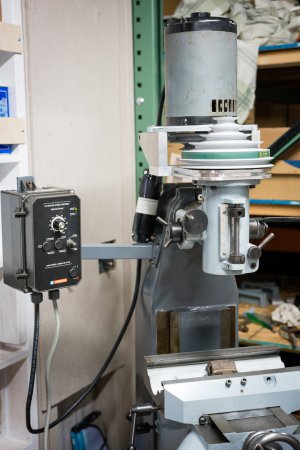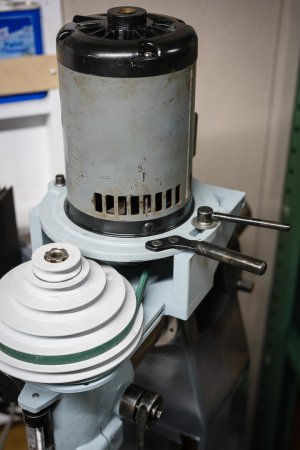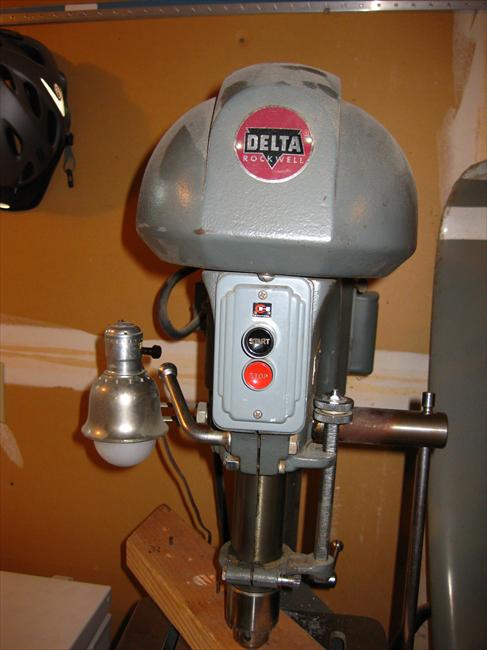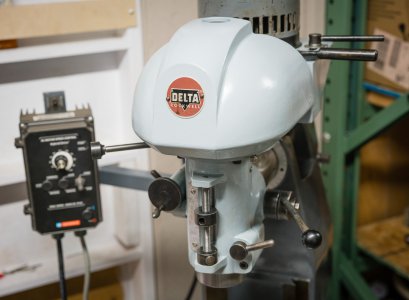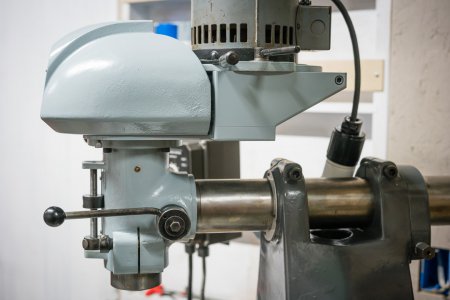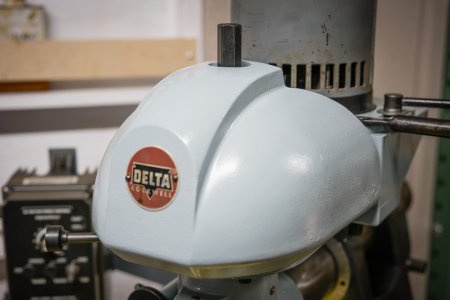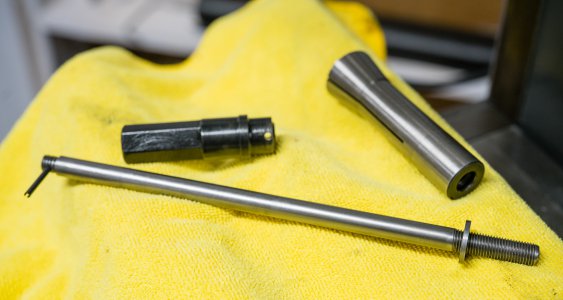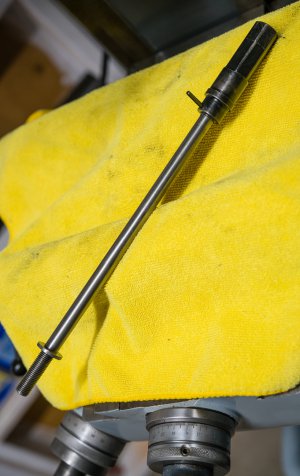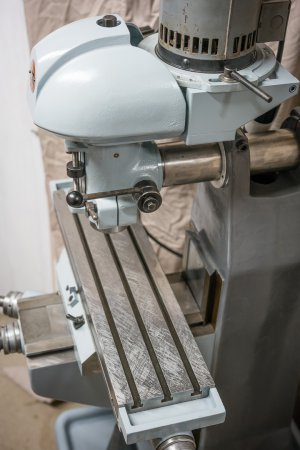- Joined
- Sep 10, 2020
- Messages
- 34
The original 3 phase 1/2 hp 1140rpm motor is secured to the housing and 4L size belt in place on the 2nd pulley for 470 spindle rpm. I will be using the KB Genesis VFD for motor control. I'm not sure how much I will be going over 60Hz with this 60+ year old motor, but with a vector duty motor I will probably top out at 100Hz. Having 4 of the original 6 pulleys, gives several options for mechanical advantage with the old motor, but with a proper vector duty motor pulleys 2 and 3 will probably be used most of the time.
The VFD enclosure is watertight with robust switches and speed pot, so no need for another enclosure with wiring. It is a "hybrid" model, digital electronics but with analog pots for various parameters which makes it easy to setup and adjust.
I've installed a 4 conductor plug and receptacle twist set between the motor and VFD. This way I can unplug it if the motor or VFD needs to be removed for any reason, or motor replacement for that matter. Nema L14-20.
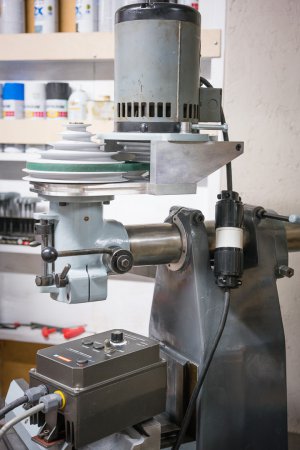
The VFD enclosure is watertight with robust switches and speed pot, so no need for another enclosure with wiring. It is a "hybrid" model, digital electronics but with analog pots for various parameters which makes it easy to setup and adjust.
I've installed a 4 conductor plug and receptacle twist set between the motor and VFD. This way I can unplug it if the motor or VFD needs to be removed for any reason, or motor replacement for that matter. Nema L14-20.

Last edited by a moderator:


